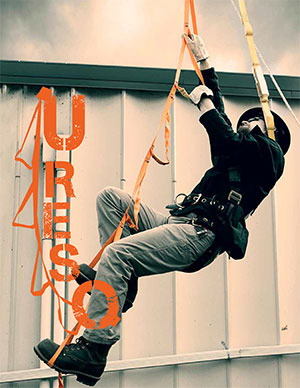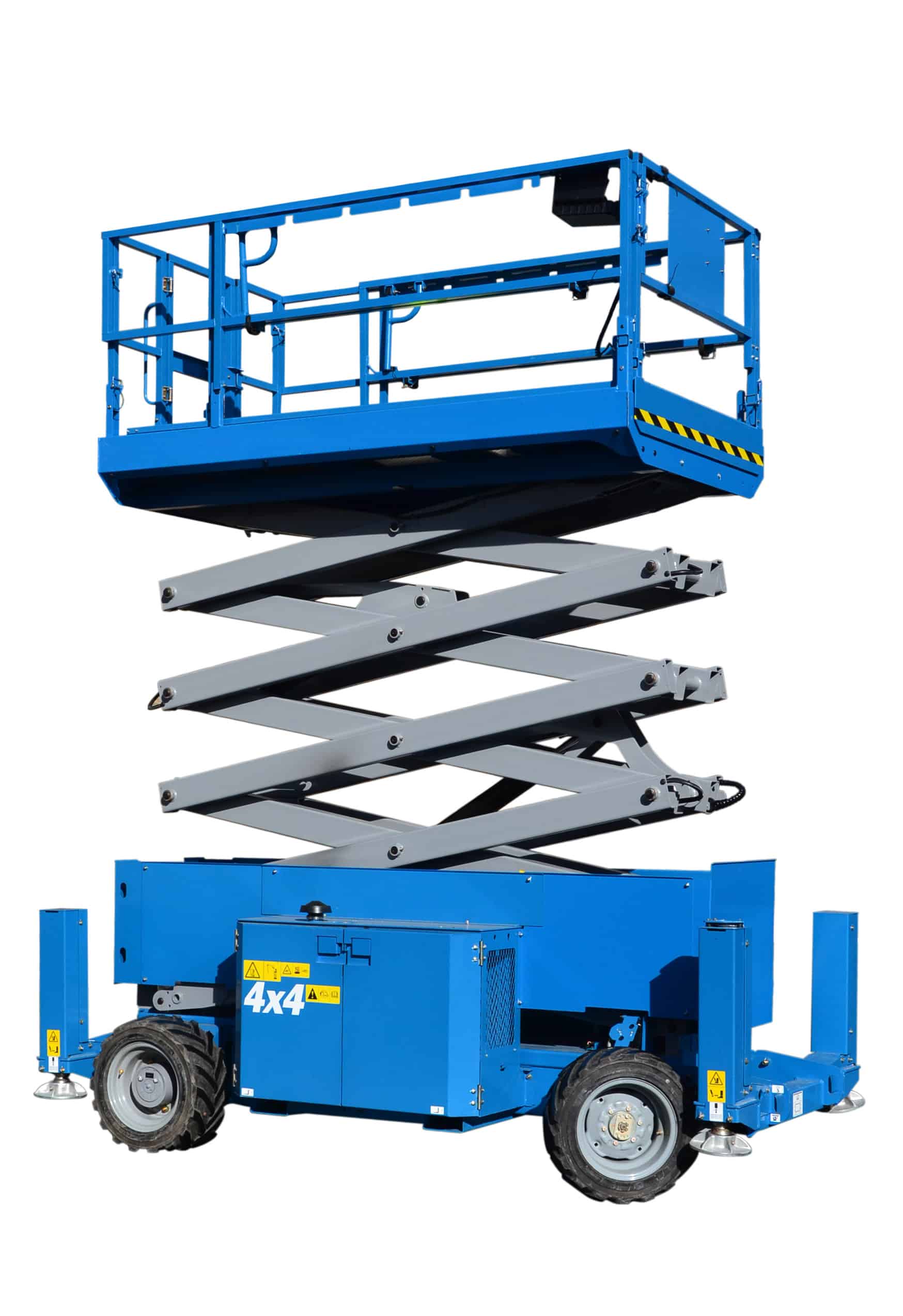Download FrenchCreek’s free Rescue Plan PDF with Rescue Checklist.
Request a Free Rescue Checklist for your team!
When working at height, you need a rescue plan
Simply put, a rescue plan is the implementation, practice, and knowledge on how to safely rescue a worker whether that be in a confined space, from a free fall, or from any dangerous situation. Creating and having all persons on a job site know a rescue plan can be the difference between life and death. Preparing a rescue plan for every job site is crucial to keeping workers safe on the job.
Time is of the essence for fall protection rescue
You are having are normal day on the job site. Everything is going smoothly until your co-worker takes a fall from 30 feet in the air. Luckily, your team has been outfitted with the latest and greatest fall protection equipment. Thankfully, your fallen co-worker is safe, for now…
“You don’t have much time,” says fall protection trainer Blaine Pettit. “The effects of suspension trauma can be fatal in as little as 10 minutes. Developing a rescue plan shouldn’t happen while your co-worker is dangling in the air.” Pettit, who is also a volunteer firefighter in rural Pennsylvania, also stresses that 911 should not be the first step in your rescue plan. “At any given time our station could be 20 minutes away from getting you help. That well beyond the danger zone for suspension trauma,” he says.
Employees are responsible for being familiar with and understanding the established rescue plan and what to do before a fall. The OSHA standard number for a fall protection rescue plan is 1926.502(d)(2). OSHA states that “an effective fallen worker rescue plan addresses the procedures, equipment, and personnel needed to ensure that a rescue proceeds quickly and efficiently when a fall occurs.”
Plan, Prepare, Practice

Creating a rescue plan, and knowing what it is, for each specific job site may seem tedious, but will save precious minutes from being wasted if a worker needs to be rescued. Depending on your job site, application, and the status of the fallen worker, your rescue plan will vary. A simple rescue plan could involve raising an aerial lift to the fallen worker. A more complex plan may involve an authorized rescuer descending to the fallen worker and lowering them both to the ground.
Because no two job sites are the same, a separate rescue plan must be issued for all new job sites. When creating a plan it is important to focus on these items:
- Jobsite Details & Location
- Emergency Contacts – who can perform the rescue, and who is the site supervisor?
- Method of Contacting- radio channel, phone number, PA system
- Rescue Equipment Onsite- Aerial lift, ladder, rescue SRLs, Scaffolding, etc.
- Locations of Rescue Equipment- where on the site is it? toolbox, truck, etc.
- Other rescue factors- landing area, obstructions, and hazards to rescue.
Types of Rescue Scenarios
Each fall has unique conditions that need to be considered during a rescue. The type of rescue needed can completely change the response of the rescuers. There should be preparations for each of the following rescue types.
Self Rescue

Given proper selection and use of fall protection equipment, a fallen worker has an increased chance of being able to perform a self-rescue. In the event of a self-rescue, it is the fallen worker who performs their own rescue. This is most commonly done by climbing to a stable platform or the level which they had fallen from. Check out FrenchCreek’s U-Res-Q self-rescue systems.
An important part of self-rescue that might not be immediately apparent is the possible need for medical attention. Even if a worker can safely climb back to their previous working platform, they still need to return to the floor or ground level for medical evaluation as is required by OSHA.
Assisted Self-Rescue Aided by Mechanical Hauling or Rope Systems.

When a fallen worker can’t conduct a self-rescue, outside assistance is required. This employs the use of mechanical advantage systems such as rope pulleys to safely lift or lower the fallen worker to a stable area. When performing a mechanically aided rescue proper equipment will be required. The typical rescue with this method uses the following steps. Watch Video Here.
- The System 99 by FrenchCreek Fall Safety or similar rope systems must be secured to an anchor rated for a minimum of 3,000 lbs.
- Lower the haul line to the fallen worker. The fallen worker will need to attach the line to their dorsal D-ring. This can be done with the use of a rescue pole. One of the rescue team members must verify a secure connection to the suspended worker has been made.
- The rescue team raises or lowers the fallen worker to either a safe platform or ground level and gives medical aid as required by OSHA.
- Remove all fall arrest systems and equipment affected by the fall from service. The equipment should be documented.
After a fall any equipment, individual components, or fall arrest systems that were impacted by the fall must be removed from service. This equipment must be documented with the item’s name, the date the fall took place, and what activity took place at the time of the fall. It is important that the equipment is turned in to management so that it is not mistakenly used again.
Mechanically Aided Unconscious Rescue
If the fallen worker is either unconscious or has injuries that prevent them from being able to self-rescue, a fully assisted rescue is needed.
- The System 99 by FrenchCreek Fall Safety or similar rope systems must be secured to an anchor rated for a minimum of 3,000 lbs.
- A member of the rescue team can secure the fallen worker by using a rescue pole to attach the haul line to the worker’s dorsal D-ring. If the rescue pole is not an option a member of the rescue team can descend to the fallen worker and directly attach them to the rescue system.
- With the fallen worker secured the rescue team can either raise or lower them to a safe platform or ground level. OSHA requires that appropriate medical aid is given.
- Remove all fall arrest systems and equipment affected by the fall from service. The equipment should be documented with the name of the fallen worker, the time the fall took place, and the activity that took place at the time of the fall.
Aerial Or Sisccor Lift Rescue

- The rescuer who enters the aerial lift must ensure that a second fall protection device is available for the fallen worker. A spare self-retracting lifeline or shock-absorbing lanyard will suffice.
- The aerial lift needs to then be positioned underneath the fallen worker. The rescuer can then ascend to the worker.
- Once the rescuer has reached the fallen worker, they can secure them to the second fall protection device.
- After the fallen worker has been secured, they can be removed from the impacted fall protection device.
- The worker is to then be lowered to the ground and given medical aid as required by OSHA.
- Remove all fall arrest systems and equipment affected by the fall from service. The equipment should be documented with the name of the fallen worker, the time the fall took place, and the activity that took place at the time of the fall.
Practice, Practice, Practice
Gather all workers to delegate roles and responsibilities. Go over the intended rescue options for equipment and scope performed. Have your team practice at a safe level and alternate individuals being the rescuer and the rescuee. At first, the rescue procedure may be a bit “clunky”, but with time and more experience, your team will be able to quickly diagnose and perform a fall protection rescue in a timely manner.
Download FrenchCreek’s free Rescue Plan PDF with Rescue Checklist. View our fall protection rescue products and contact us with any questions.